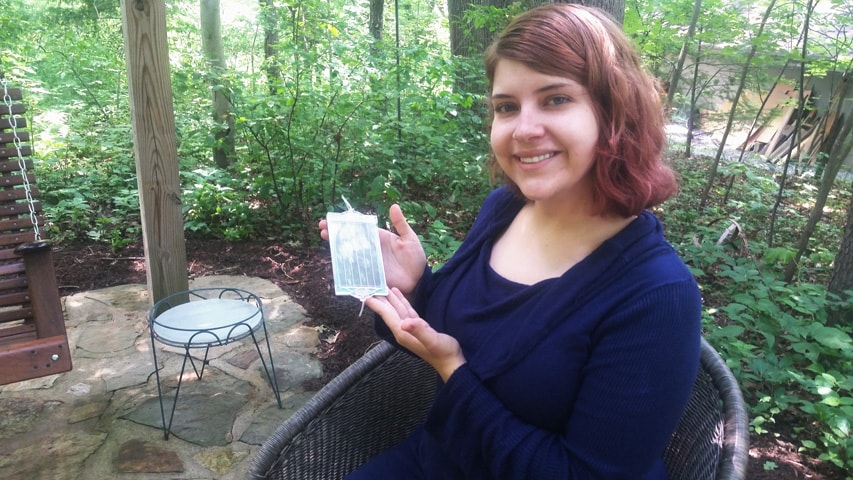Malaria's Magnetic Properties May Pull Treatments Forward

Ph.D. candidate Andrea Martin shows off a device she's working on to filter malaria-infected cells out of patients.
Malaria has a magnetic foe.
Andrea "Blue" Martin, a Carnegie Mellon University doctoral candidate in biomedical engineering, is working to create a device that uses magnets to filter out patients' red blood cells infected by the mosquito-borne parasite, which makes the cells magnetic.
The promising device, known as mPharesis, is the size of a smartphone and works by passing an extremely thin layer of blood over an array of magnets and ferromagnetic wires. The name is an abbreviation of magnetic apharesis, a procedure in which blood is filtered, separated and a portion returned to the donor.
"There are many published devices that separate out magnetic cells, but all operate at very low concentrations and throughput," Martin said. "mPharesis works with whole blood and a much larger scale."
The idea is that infected cells are pulled to the bottom of the device, skimmed off and discarded, while the filtered blood is returned to the patient.
"My preliminary experiments show that I am able to remove up to 20 percent of these infected cells on the first pass with conditions similar to a severely infected patient," she said during this year's Three-Minute Thesis competition. "My research shows great potential to be developed into a treatment system that is similar to, but cheaper than, dialysis."
Prior to working on her doctorate, Martin worked as a machinist and lab manager for Biomedical Engineering and Electrical and Computer Engineering Professor Jim Antaki, who encouraged her to pursue her doctorate at CMU. She knew she wanted to work with medical devices, and through her work with Antaki, she started working with Accel Diagnostics. Her project spun out of that experience.
In its initial conception, the startup's device used one large magnet for filtering, but its magnetic field wasn't strong enough. Martin had the idea to use a number of smaller magnets to strengthen the field.
Martin also created an inexpensive, quick laser-cut fabrication method for device prototypes. She said the device can be built in two hours and she can monitor in real time the separation under a microscope.
She is aiming to earn her Ph.D. in 2017 and hopes to create or design medical devices.